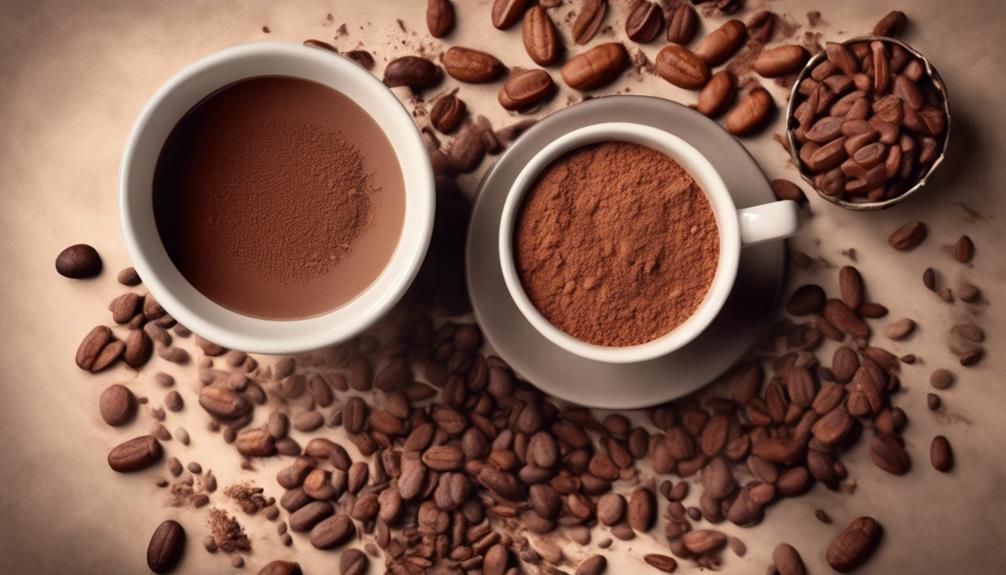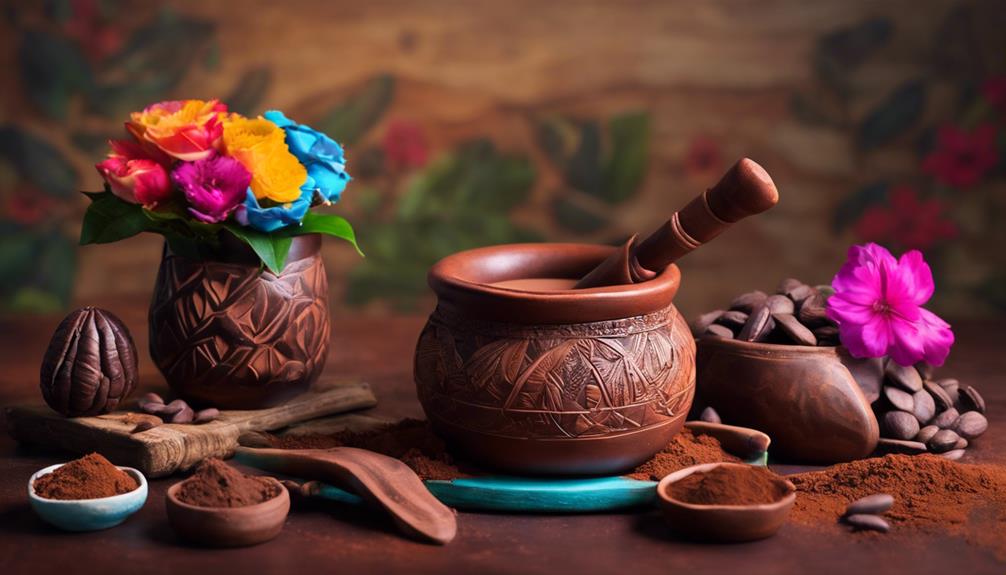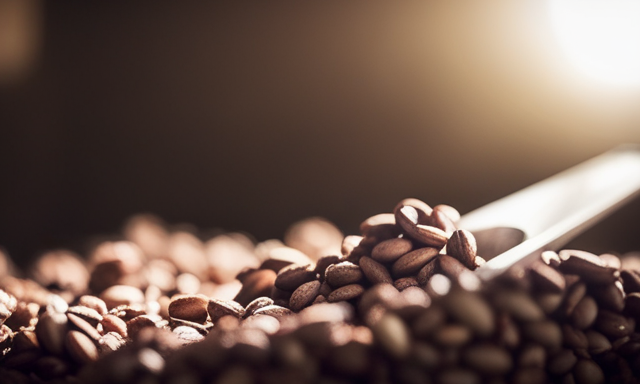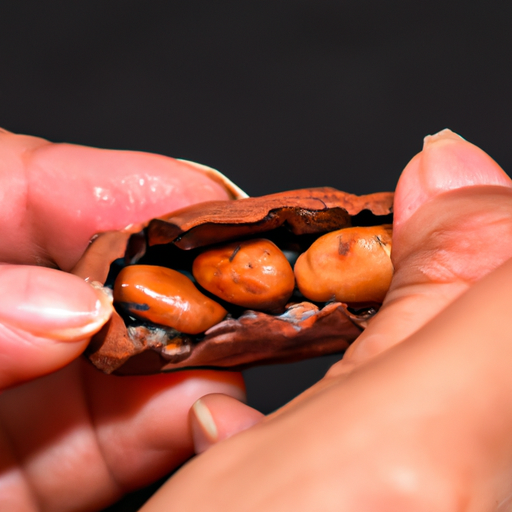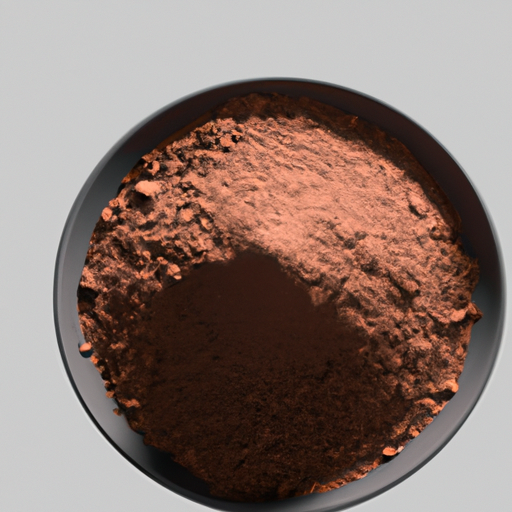Cacao, which comes from cacao tree pods, undergoes a detailed process involving fermentation, roasting, and grinding to transform into chocolate. Varieties such as Forastero, Criollo, and Trinitario impact the overall caffeine content. Dark chocolate contains higher levels of caffeine compared to milk or white chocolate because of the added theobromine. Being aware of these differences can help with making informed decisions, particularly when it comes to health benefits and avoiding potential drawbacks.
Cocoa powder, a healthier option with natural fats and antioxidants, gives a subtle caffeine boost suitable even for the sensitive. Careful consideration of theobromine effects, differing from caffeine, is crucial, especially in darker chocolate. Embrace moderation within daily limits, keeping in mind individual tolerance, balanced consumption, and overall well-being. Recipes like a Mocha Smoothie or Cacao-Infused Chili can further enrich your cacao experience with caffeine.
Key Takeaways
- Dark chocolate contains higher caffeine and theobromine levels.
- Understand caffeine variances in cacao products for informed choices.
- Moderation in consumption for health benefits and avoiding negatives.
- Consider theobromine effects, especially in dark chocolate.
- Balance daily caffeine intake while enjoying cacao treats.
Origins of Cocoa Beans
Harvested from large pods on the cacao tree, cocoa beans are the seeds that form the basis of the beloved treat we all know as chocolate. These beans come in different varieties like Forastero, Criollo, and Trinitario, each contributing distinct flavors to the world of chocolate.
When the cacao pods are ready, they're carefully harvested to guarantee the quality of the beans inside. The next vital steps involve fermentation and the drying process. Fermentation helps to develop the rich chocolatey taste we love, while the drying process removes any bitter undertones, leaving behind the pure essence of cocoa.
It's fascinating to think about how these simple beans undergo such a transformation to become the delectable chocolate we enjoy. The care and precision that go into each stage of this process truly highlight the artistry behind the creation of chocolate.
Cacao Bean Processing Methods
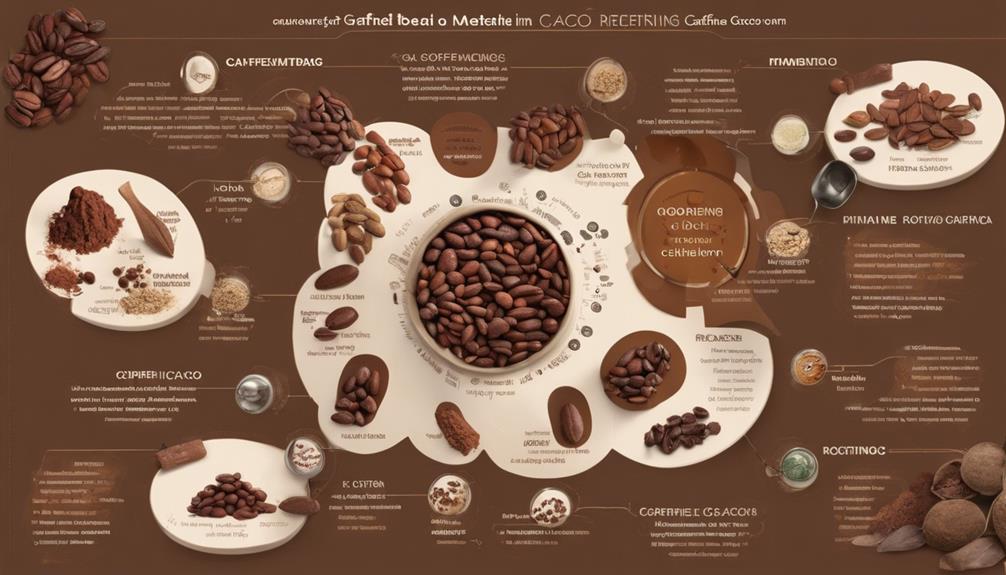
After the careful fermentation and drying of cacao beans to develop their rich flavors, the next essential step in the process involves roasting to enhance aroma and flavor profiles. Roasting cacao beans is a pivotal step that not only intensifies the flavors but also reduces the moisture content, leading to a more concentrated taste.
Once roasted, the beans are ground to create a smooth paste known as chocolate liquor. This liquor is then pressed to separate the cocoa solids from the cocoa butter, which is a key component in chocolate-making. Following this separation, the final processing stages include mixing, refining, and conching.
Conching is a process where the chocolate is continuously mixed and heated to achieve the desired texture and taste. Through these meticulous steps of grinding, pressing, and conching, the cacao beans transform into the delectable chocolate products we all love.
Caffeine Levels in Cocoa Products
Cocoa products, like baking cocoa and dark chocolate, contain varying levels of caffeine and theobromine. Dark chocolate tends to have higher amounts of both compared to milk or white chocolate.
It's important to be mindful of the levels of these stimulants in cocoa products for moderation and health purposes.
Cacao Vs. Coffee
When comparing cacao and coffee regarding caffeine levels in cocoa products, it is essential to note that dark chocolate contains more caffeine than milk or white chocolate due to its higher cocoa solid content. Theobromine, a compound similar to caffeine, is also present in cocoa nibs. Here is a comparison between the caffeine content in cacao products and coffee:
| Product | Caffeine Content (per 100g) | Theobromine Content (per 100g) |
|---|---|---|
| Dark Chocolate | High | High |
| Milk Chocolate | Moderate | Moderate |
| White Chocolate | Low | Low |
| Coffee | High | Low |
Understanding these differences can help in making informed choices between cacao and coffee consumption.
Dark Chocolate Comparison
Comparing the caffeine levels in dark chocolate to other cocoa products reveals its significantly higher content. Dark chocolate packs around 43mg of caffeine per 100g, surpassing milk chocolate in caffeine concentration.
Additionally, dark chocolate contains approximately 493mg of theobromine per 100g, a compound that's elevated in dark chocolate compared to milk or white chocolate.
The combined caffeine and theobromine content in dark chocolate might provide a mild stimulant effect when consumed. This stimulant effect sets dark chocolate apart from its milk and white counterparts, making it a popular choice for those seeking a bit of a pick-me-up.
Moderation and Health
With varying levels of theobromine and caffeine found in different cocoa products, it's essential to understand the importance of moderation for one's health.
- Consuming high amounts of theobromine and caffeine can have negative side effects on the body.
- Moderation is key to enjoying the health benefits of cocoa products without overloading on caffeine.
- Dark chocolate contains higher levels of theobromine and caffeine compared to milk chocolate.
- Balancing consumption of cocoa products can help prevent adverse health effects while still enjoying their rich flavors.
Health Benefits of Cocoa Powder

Indulging in cocoa powder not only satisfies my chocolate cravings but also offers a range of health benefits. Cocoa powder, derived from cacao beans, retains natural fats like cocoa butter that are removed during processing.
Despite its intense and rich chocolaty taste, cocoa powder contains no added sugars, making it a healthier alternative for fulfilling sweet cravings. Additionally, even a small amount, like a tablespoon of cocoa powder, can provide a subtle caffeine kick. Compared to other caffeinated beverages, cocoa powder offers a milder caffeine effect, making it a suitable choice for those sensitive to caffeine.
Beyond its delightful flavor and caffeine content, cocoa powder is packed with health benefits. These benefits include antioxidant properties, which can help reduce inflammation and improve heart health.
Comparing Caffeine in Chocolate Products
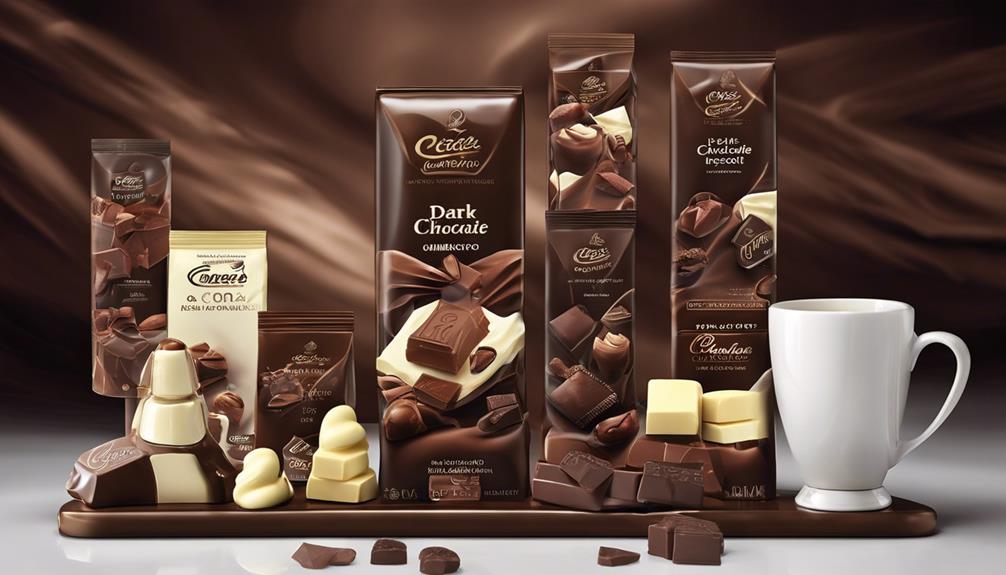
Savoring different chocolate products reveals varying levels of caffeine content, ranging from the energizing dark chocolate to the caffeine-free white chocolate. Here's a breakdown to help you understand better:
- Dark Chocolate: Contains around 43mg of caffeine per 100g, making it a good choice for a little pick-me-up during the day.
- Milk Chocolate: Offers approximately 20mg of caffeine per 100g, providing a milder energy boost compared to dark chocolate.
- Cacao Powder: Packs a punch with up to 230mg of caffeine per 100g, perfect for those needing a more significant caffeine kick.
- White Chocolate: For those looking to avoid caffeine altogether, white chocolate is the way to go as it doesn't contain any caffeine at all.
Understanding Theobromine in Cacao
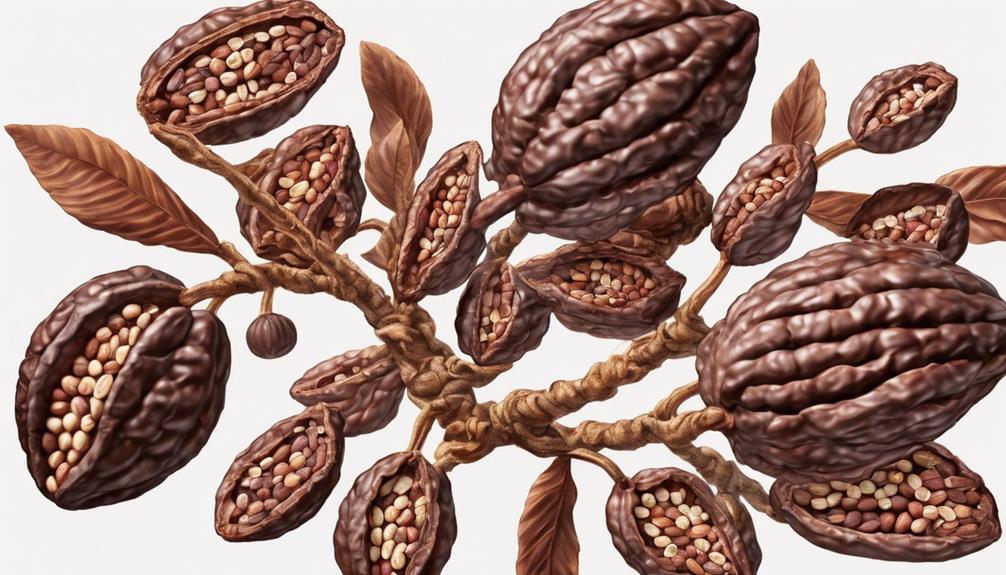
Exploring the world of cacao reveals not only varying levels of caffeine in different chocolate products but also the presence of theobromine, a stimulant found in cacao. Theobromine acts as a mild stimulant, dilating blood vessels to enhance oxygen flow throughout the body. Unlike caffeine, the effects of theobromine are longer-lasting, providing a sustained energy boost. However, consuming theobromine in moderation is crucial, as overconsumption can lead to side effects like nausea and an increased heart rate.
Dark chocolate and cocoa products contain higher levels of theobromine compared to milk chocolate, making them a more potent source of this stimulant. This compound is what gives dark chocolate its characteristic bitter taste. Pets are more susceptible to theobromine poisoning from consuming chocolate due to their slower metabolism. Understanding the effects of theobromine in cacao can help you make informed choices about your chocolate consumption for both yourself and your furry friends.
Caffeine in Dark Chocolate Vs. Milk Chocolate
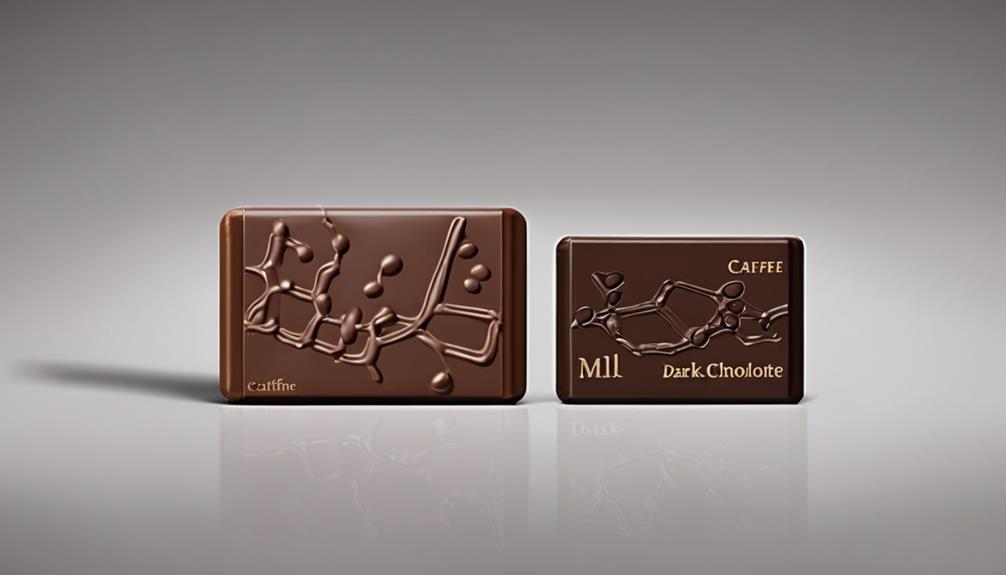
Comparing the caffeine content between dark chocolate and milk chocolate reveals a significant difference based on their cocoa concentrations. Here are four key points to bear in mind:
- Dark chocolate contains around 43mg of caffeine per 100g, while milk chocolate has approximately 20mg per 100g, making dark chocolate the higher caffeine option due to its increased cocoa content.
- The caffeine in dark chocolate can offer a mild stimulant effect, providing a subtle energy boost compared to milk chocolate.
- In contrast, milk chocolate has lower caffeine levels, making it a gentler choice for individuals with caffeine sensitivity.
- Understanding the disparities in caffeine content between dark and milk chocolate can help in making informed decisions based on personal preferences and caffeine tolerance levels. By being aware of these differences, individuals can select the type of chocolate that aligns best with their desired caffeine intake.
Effects of Caffeine on the Body
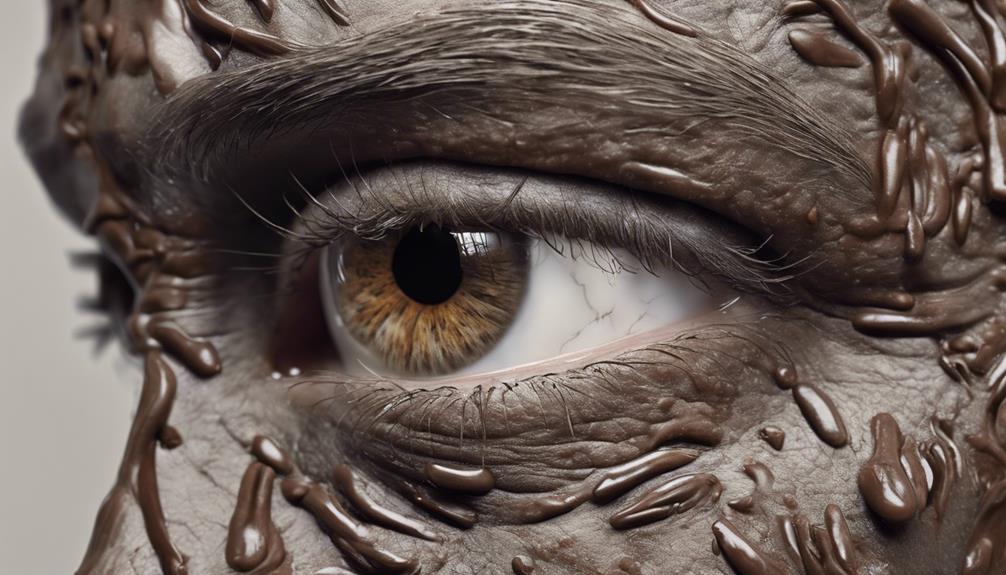
After understanding the disparities in caffeine content between dark and milk chocolate, it's crucial to recognize the varied effects caffeine can have on the body. When it comes to caffeine in chocolate, dark chocolate contains higher levels of caffeine compared to milk chocolate. This means that indulging in dark chocolate can pack more of a caffeine punch. Caffeine, found in both types of chocolate along with theobromine, acts as a psycho-stimulant on the central nervous system. It can lead to feelings of alertness, but in some individuals, it may also trigger anxiety and jitteriness.
Consuming an excessive amount of caffeine, exceeding 400mg per day, can result in unpleasant side effects such as headaches and jitters. Additionally, caffeine is a diuretic, which means it can disrupt sleep patterns if consumed late in the day. It's important to be mindful of your caffeine intake, as it can deplete magnesium stores in the body over time. So, enjoy your chocolate treats in moderation to savor the benefits without overindulging in caffeine's effects.
Recommended Consumption of Caffeinated Cacao

When relishing caffeinated cacao products, it's crucial to keep tabs on your intake. Moderation is key to staying within the recommended daily caffeine limits.
Be mindful of the caffeine content in different cacao treats to maintain a balanced consumption level.
Optimal Caffeine Intake
To optimize my caffeine intake while enjoying caffeinated cacao, I adhere to the recommended daily limit of up to 400 milligrams for most adults. Here are four essential tips to help you make the most of your caffeinated cacao experience:
- Enjoy dark chocolate for a more concentrated cocoa flavor and potential caffeine boost.
- Be mindful of your consumption of caffeine-containing cacao products like hot chocolate.
- Remember that theobromine, another stimulant in cacao, can also impact your overall caffeine intake.
- Consider your individual tolerance to caffeine when indulging in delicious caffeinated cacao treats.
Health Considerations for Cacao
Taking into account the health implications of consuming caffeinated cacao, it's essential to understand the recommended intake for ideal well-being. Moderation is key when enjoying cacao for its caffeine and theobromine content.
Dark chocolate and cocoa products can offer benefits like enhanced mood and cognitive function, as well as sustained energy levels without the usual caffeine jitters. It's important to balance consumption to avoid potential side effects like heart palpitations from excessive theobromine intake.
Recipes Using Caffeinated Cacao
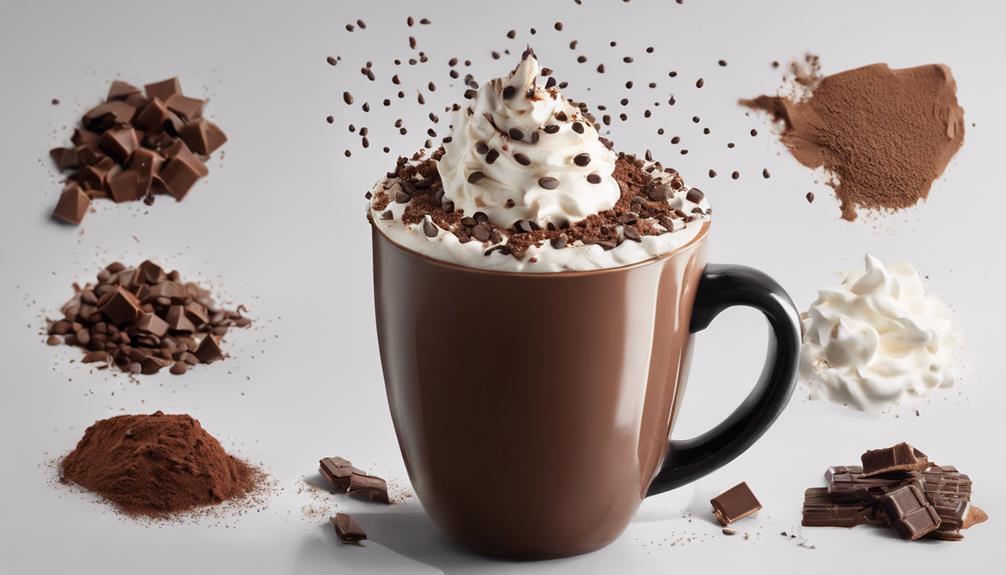
I've discovered some fantastic ways to incorporate the energizing power of cacao into delicious recipes. Here are four recipes that will surely satisfy your cravings and boost your energy levels:
- Mocha Smoothie: Blend dark chocolate cacao with coffee for a creamy and energizing morning treat.
- Cacao Energy Balls: Mix dates, nuts, and cacao for a quick and healthy snack bursting with flavor and caffeine.
- Cacao Espresso Martini: Combine cacao with espresso and spirits for a luxurious and invigorating cocktail experience.
- Cacao-Infused Chili: Spice up your chili recipe by adding cacao and beans for a unique and savory dish that packs a caffeine punch.
These recipes not only provide a delicious way to enjoy the benefits of cacao but also offer a delightful caffeine kick to keep you going throughout the day. Try them out and indulge in the rich flavors and energizing effects of cacao in your meals.
Frequently Asked Questions
How Much Caffeine Is in Pure Cacao?
In pure cacao, the caffeine content ranges from 0.1% to 0.7%. Cacao powder has a higher concentration, up to 230mg per 100g. Dark chocolate from cacao contains about 43mg per 100g. White chocolate has no caffeine.
How Much Caffeine Is in 70 Percent Cacao?
I've found that a 70% cacao dark chocolate bar typically holds 25-30 milligrams of caffeine per 1-ounce serving. It's a moderate caffeine source compared to coffee. Theobromine content is higher, contributing to its stimulant effects.
Is There More Caffeine in Cacao Than Coffee?
Regarding caffeine content, cacao generally has less than coffee. Dark chocolate or cocoa powder offers a milder stimulant effect compared to coffee due to lower caffeine levels. The contrast regarding caffeine content between cacao and coffee is notable.
Is There Caffeine in Full Power Cacao?
Yes, there's caffeine in Full Power Cacao. It provides a natural energy boost, enhances alertness, focus, mood, cognitive function, and mental clarity. With approximately 230mg per 100g, Full Power Cacao is a great source of caffeine!
Which has more caffeine, cacao or coffee?
When it comes to cacao vs coffee comparison points, it’s important to note that coffee generally contains more caffeine than cacao. A typical cup of coffee has around 95 mg of caffeine, while a cup of cacao has about 12-20 mg. So, if you’re looking for a caffeine boost, coffee is your best bet.
Conclusion
In the world of cacao, caffeine plays an essential role in providing energy and focus. Just like a superhero harnesses their powers to save the day, caffeine in cacao can help you stay alert and ready for any challenge that comes your way.
So next time you enjoy a piece of chocolate or sip on a cup of hot cocoa, remember the caffeine content and embrace the boost it gives you!

